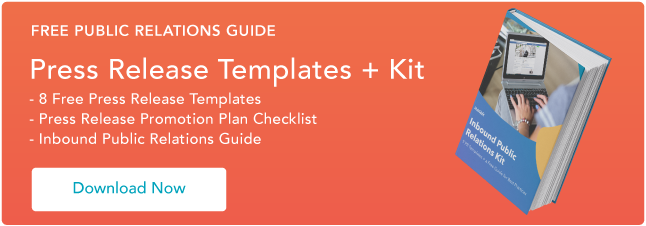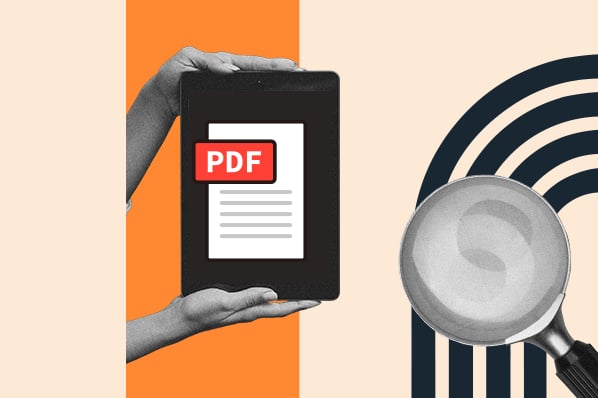Remember when people used to learn about upcoming events, the latest trends, and cool new products exclusively from magazines, newspapers, and TV shows?

These publications and broadcasts are where brands used to get all their earned media. But earned media has expanded beyond print and TV, and marketers can harness it in several ways.
Earned Media
Earned media, or earned content, is any material written about you or your business that you haven't paid for or created yourself. Although this type of media is always published by a third party, there are ways marketers can position themselves for earned media opportunities.
In many ways, earned media's nickname is "publicity." You haven't paid for this media to be created -- the way you would for, say, an advertisement -- and therefore your actions alone "earned" you this attention. But because the places we get information have changed over the last 30 years, how has earned media changed as a result?
Still you might also hear earned media referred to as "free media," because you haven't paid for this media to take place.
How Earned Media Has Changed
Earned media used to be the 90-minute segment on cable news about a new consumer product. And to some extent, this is still a critical source of earned media.
However, earned media now also comes in the form of a customer tweet about "the best brunch ever!" at a restaurant that got several likes and retweets. It's that horrible Yelp review about how a different customer had "the worst brunch ever" at that very same restaurant. And, it's that technology blogger's "Top 10 Apps of The Year" article that was viewed and shared by thousands of people after you launched your new mobile app.
What Earned Media Isn't
Earned media isn't publicity you pay for or own. When a company pays a publication to write a glowing article about them, for example, that's not an example of paying for earned media -- that's just paid media. And when you write a blog post for your company blog about your latest product release, that's not earned media, either -- that's owned media, since you own that blog post.
The distinctions are fairly clear between these camps, but they're important for any marketer to know.
How effective is earned media?
In short, very. Today's consumers are influenced greatly by family, friends, and what they read and see online. People no longer share the good, the bad, and the ugly of brands exclusively at the water cooler -- they share it with everyone they're connected with online, which can include hundreds, thousands, or maybe even millions of people.
And a lot of those people listen and use those stories to make buying decisions. In fact, according to HubSpot Research, 57% of people in the U.S. trust what they hear from friends and family the most when they discover a new product. About one third of U.S. buyers prefer what information they can find from a Google search.
As digital marketing and social media continue to evolve, so will earned media -- and departments other than public relations, like marketing and customer service, will become more responsible for capturing earned media attention.
To make sure you're caught up on this "web 2.0" version of an old-school term, let's dive into what earned media means today and the various ways you can use it in your marketing.
Earned Media Examples
You may have heard of earned media as compared with paid media and owned media. As we hinted to above, there are pretty thick lines between paid media, owned media, and earned media: You "pay" for paid media, you "own" owned media, and you "earn" earned media. To show you what this looks like in practice, here are some common examples of earned media today.
TV News Segment
If your business makes a big-enough splash in its industry, you can still expect to see earned media in the form of a 90-second news spot on a local (or national) station. This is some of the oldest earned media out there, and it still occurs today.
For example, a business that relocates its headquarters to a new city -- and promotes that relocation online -- might capture an interview opportunity with the city's local news station about some of the new jobs it will be hiring for.
Newspaper Article
Newspapers, both in print and online, constantly share big community developments that impact people both locally and nationally. So, just like a story on TV about a new business development, local newspapers can just as easily pick this story up and write it down for online readers.
Tweet
Twitter might revolve around trending topics worldwide, but there are also countless smaller communities of Twitter users who broadcast their thoughts on issues related to their industry. A tweet, therefore, is a tiny instance of earned media. But it depends on whom the tweet comes from.
Is social media earned media?
Social media can be considered owned, paid, or earned media. It depends on what content is posted and who posts it. If a business sponsors a post about a new product, this is a form of paid media. If a customer posts about this product on his/her own account, this is a form of earned media.
For example, if a business starts using new lead-generation software to help their marketing team, and an employee tweets, "Just started using @HubSpot and it's helped us deliver amazing leads to our sales team!" We here at HubSpot might call that a positive dose of earned media.
Article on a Trade Publication
Smaller business developments might not earn the attention of major media conglomerates, but they very well could capture the interest of a trade publication focused on their industry. This, too, is earned media.
For example, an environmental business that creates a new method of composting might get overlooked by the evening news, but a magazine all about sustainability is likely to want to write an article about this innovative method for its niche audience.
Product Roundup
There are always content creators out there who are writing "roundup" articles, which list the best of a particular type of product for customers who seek high-quality items. If you build a product, and it's good enough, getting included in somebody's roundup is a form of earned media.
For example, a tent maker that develops a new one-person tent for a low price could wind up in an article called "The 10 Best One-Person Tents for Campers on a Budget."
Organic Traffic
This example is a tricky one to define. Earned media usually comes in the form of content, either in written or video form. But if you create your own content, and "earn" traffic to this content from ranking highly on search engines, the traffic you receive to this content is, in some ways, earned media. But let's be clear: There's an important difference between SEO and organic traffic ...
Is SEO earned media?
SEO is not technically earned media. SEO is a process that you control to help your media perform better. However, you can "earn" organic traffic from the optimization you do. This makes organic traffic a form of earned media, even if the content itself is owned media.
For example, if you write a blog post -- a form of owned media -- and conduct keyword research on this blog post to optimize it for Google Search, your blue linked result shown on Google's search engine results page (SERP) is an "earned" ranking. This makes the traffic you get from people who click on this result earned media attention.
Customer Review
One of the biggest things to change in the world of earned media over the last decade is how customers express their feelings about a product they've used. Gone are the days where your clients' opinions of you are limited to phone calls and dinner conversations. When people love or a hate a product, they make it known in writing via reviews on sites like Yelp, Google Reviews, TripAdvisor, Amazon, and more. Every review about you is earned media.
Word of Mouth
You might not think of "word of mouth" as an example of earned media, but today, it continues to be as free and impactful as a tweet or Yelp review.
Every time your business affects a customer, whether that effect is good or bad, you earn a place in day-to-day conversation. This means departments like marketing and customer service are just as critical to the tone of that conversation as the product itself.
For example, when a marketing team creates helpful or entertaining content for its audience, it's making potential customers happy. When a customer service team solves a critical problem for someone, it's making current customers happy. And the happier your customers, the more positive earned media you'll get the next time they're chatting with someone who's looking to buy a product like yours.
Of course, the lines between earned and paid media can blur at times. Take viral videos, for example. A video doesn't just go viral by accident -- most of the time, there is a lot of careful planning involved to kick start the video's exposure with paid media, and at some point the paid media stops once earned media picks up.
The lines can blur between earned and owned media, as well. A blog post you write featuring your own industry research, for example, could get picked up by other bloggers and media outlets. Similarly, a press release you write following a product launch serves to encourage others in the industry to share your news on other publications. So, while earned media isn't always a direct result of owned media, owned media can help you get more attention from third parties.
The key to understanding the difference between the three is this: Unlike paid and owned media, earned media isn't controlled by brands, which makes it less biased and more trusted.
How do you "earn" earned media?
Because earned media is owned by third parties, it may seem like it's out of your hands -- but that's actually not true. Marketers have the tools to influence some (not all) conversations about their brands. Here are three of the best ways to do just that:
1. Create content worth sharing.
Get people to want to share your content with one another by ... drum roll please ... creating awesome content worth sharing! Shareable content tends to be either really useful or really funny, and in the form of a list, infographic, or video. There's even a science to what makes content shareable. Also, make it easy for people to actually share your content by placing social share buttons where appropriate.
2. Invest plenty of time in interacting on social media.
Without social media, you and your potential customers are basically strangers. That's the really cool thing about social media: It brings you so much closer to consumers. To have an impact on them and to encourage them to talk about your brand, you should spend plenty of time and energy interacting with them individually online.
Set up filters in your social monitoring tools to help monitor conversations about your brand, and jump in when you can add something to the conversations. Ask your followers questions about their daily lives or about their experiences with your brand. Give your biggest fans a shout out from your account. Your willingness to show people you care enough about them, about their experience, and about your own business to respond to their posts can elicit positive emotions about your brand, and those positive emotions are share-worthy.
3. Make your customers really, really happy.
All customers don't automatically become brand promoters -- you have to put the work in to not only meet their expectations, but exceed them. When you go above and beyond for your customers, you become a lovable brand. And when customers love you, they are more likely to give referrals, share good things about you on social media, give testimonials, and remain loyal to your brand for a long time.
According to research published by Oberlo, 54% of people on social media are researching products they're interested in. Product sentiment can spread virally through social media sites like Facebook -- and that positive vibes spread faster than negative ones. Create cool content, interact with people, and delight your customers -- and you can bet they'll spread the word.


![How to Write a Press Release [Free Press Release Template + 2024 Examples]](https://blog.hubspot.com/hubfs/press-release-template_9.webp)
.jpg)





![How to Write an Effective Communications Plan [+ Template]](https://blog.hubspot.com/hubfs/communication-lan_6.webp)
![Should You Pay a PR Firm? [+PR Tactics You Can Manage In-House]](https://blog.hubspot.com/hubfs/hire-pr-fi (1).jpg)
.jpg)